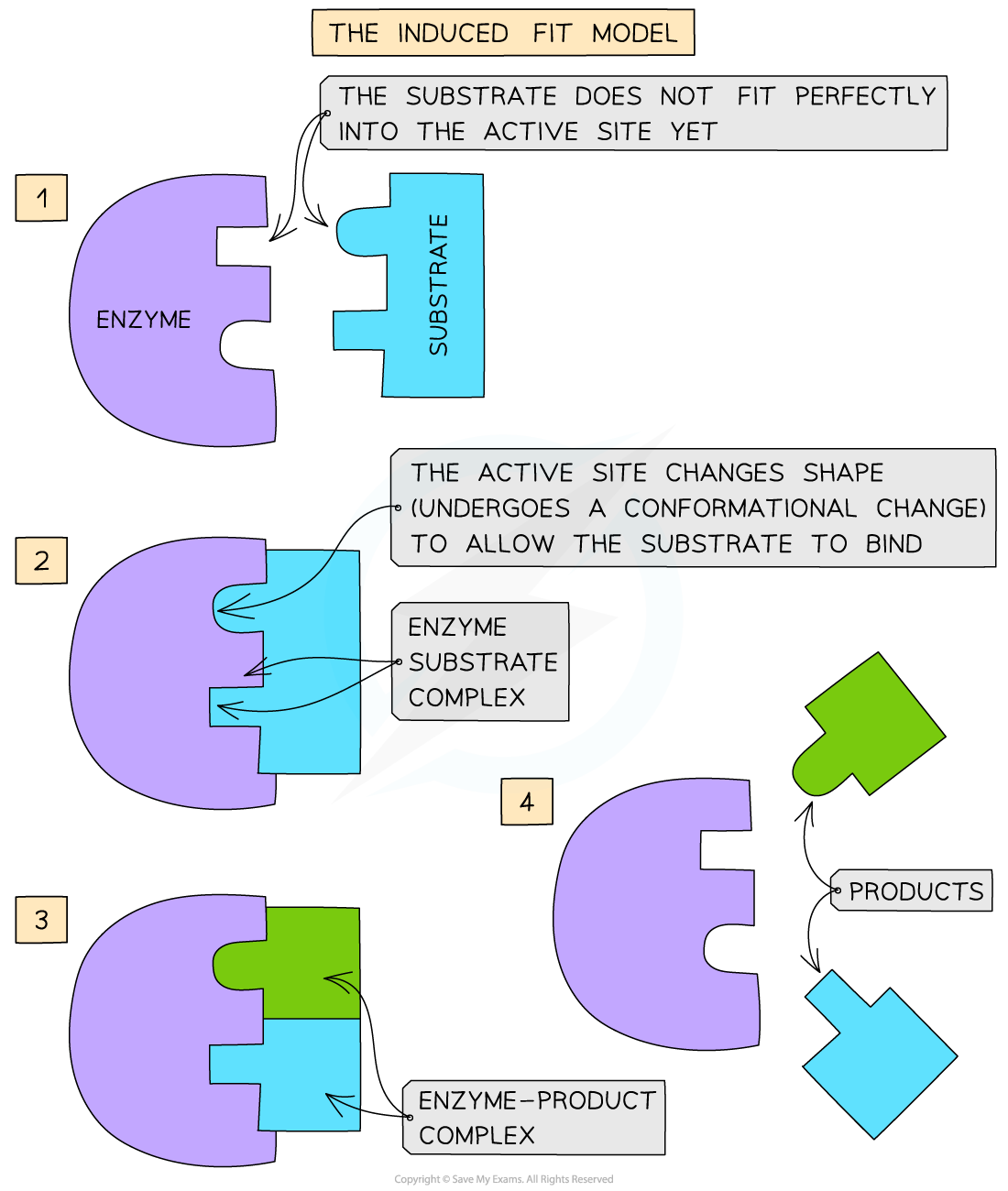How Enzymes Work (AQA AS Biology): Revision Note
Exam code: 7401
The induced-fit model
Also known as the ‘induced-fit hypothesis’
In this model, the enzyme and substrate interact with each other in the following way:
The enzyme and its active site (and sometimes the substrate) can change shape slightly as the substrate molecule enters the enzyme
These changes in shape are known as conformational changes
This ensures that an ideal binding arrangement between the enzyme and substrate is achieved
This maximises the ability of the enzyme to catalyse the reaction

Development of the induced-fit enzyme model
Scientists often use models to explain their observations from experiments
As technology and research advances within a field, new models can be developed and old ones disproven
The lock and key model covered at GCSE was originally thought to be an accurate model of enzyme action
It was suggested that the rigid shape of the active site of the enzyme is a precise fit for the specific shape of the substrate
New techniques have allowed scientists to discover that proteins are not rigid structures
Experiments showed that multiple regions of an enzyme molecule moved in response to the environment
Many of these movements were minimal, but some of them were more significant
The larger movements occurred when the substrate bound to the enzyme
These findings led to the now widely accepted induced fit model
There is evidence to support the induced fit model:
X-ray diffraction techniques allow for 3D pictures of molecules to be formed
This technique was used to produce pictures of the enzyme hexokinase before and after it bound to its substrate glucose
The images confirmed that the active site of the enzyme changed shape after the substrate bound
Examiner Tips and Tricks
You are expected to appreciate how models of enzyme action have changed over time, but you only need to know about the induced-fit model of enzyme action in detail.

Unlock more, it's free!
Did this page help you?